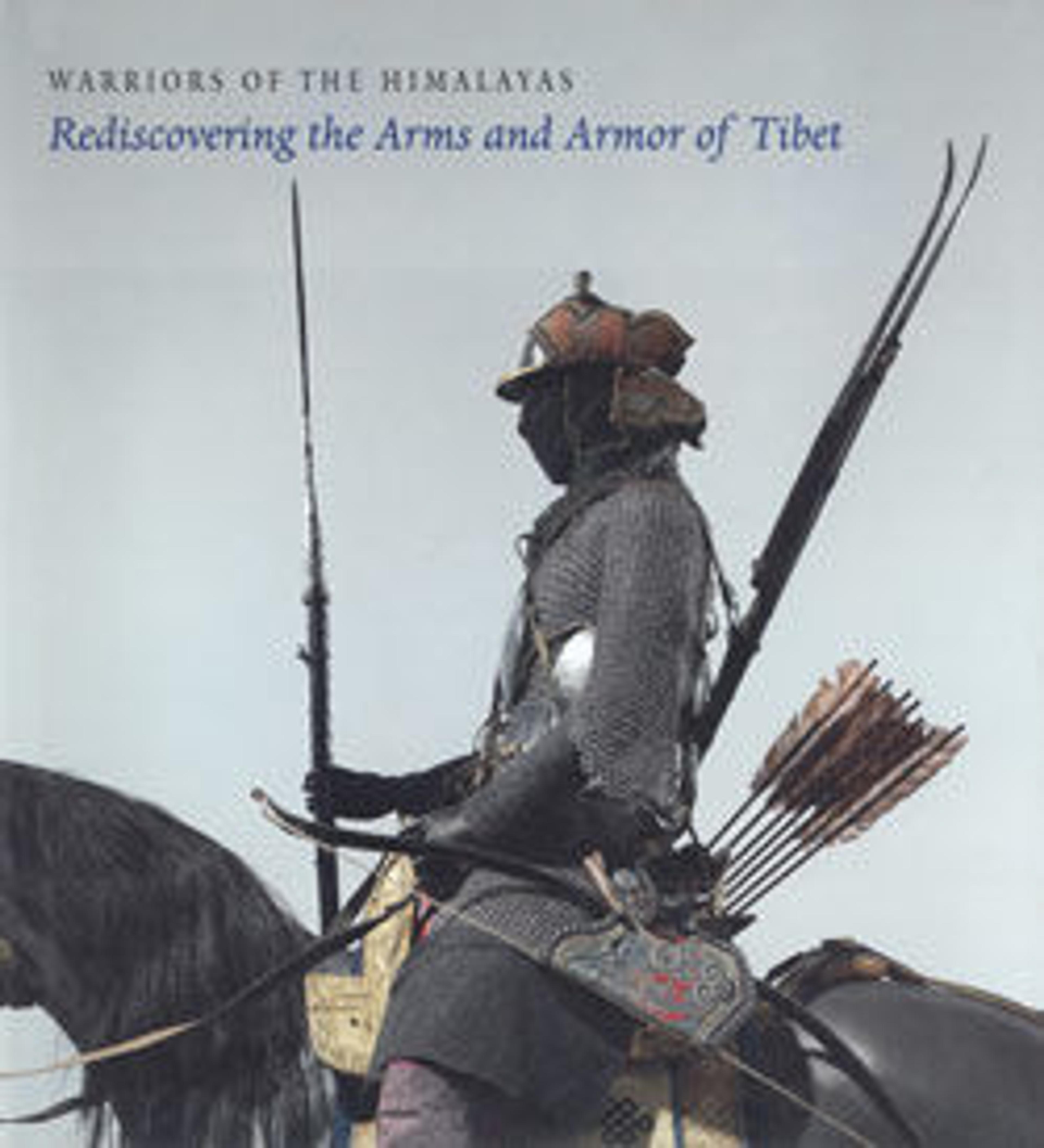Lamellar Armor (Byang Bu'i Khrab) and Helmet
This is a representative example of a Tibetan lamellar armor and helmet. Both pieces show signs of hard use and repairs. By comparison with examples that are thought to be earlier in date, its lamellae are relatively coarse, dark in color, roughly finished, and more irregular in size. Most Tibetan lamellar armors share several distinct features. The body of the armor has the form of a sleeveless robe made from twelve to fourteen or more rows of lamellae, and the coat has a distinct waist, with the lamellae of that row being bent in a subtle curve. Most armors are sleeveless, but some have shoulder defenses formed of several rows of lamellae, and full sleeves in at least one rare instance. The coat opens down the length of its front, and the back of the skirt is split vertically from the bottom row up to the waist by two seams, one at either side. Some are trimmed with borders made of silk brocade, which is attached around the bottom edge of the coat at the base of the skirts and at the bottom of the shoulder defenses. However, the majority have a simple border at the base of the skirts consisting of two layers of thick leather.
Equally distinctive helmets were made to match the armors and are likewise associated only with Tibet or the Tibetan cultural region. Like the armors, this type of helmet is constructed of iron plates joined by leather laces. The bowl of the helmet is usually made up of eight arched plates, with four narrow outer plates that have cusped edges, and four wider inner plates that have smooth edges. In addition to a characteristic plume finial at the top of the helmet, on complete examples there is also a single row of lamellae encircling the base of the helmet bowl, a pair of cheek defenses made of five to seven rows of lamellae, and a flaring nape defense of three rows.
Equally distinctive helmets were made to match the armors and are likewise associated only with Tibet or the Tibetan cultural region. Like the armors, this type of helmet is constructed of iron plates joined by leather laces. The bowl of the helmet is usually made up of eight arched plates, with four narrow outer plates that have cusped edges, and four wider inner plates that have smooth edges. In addition to a characteristic plume finial at the top of the helmet, on complete examples there is also a single row of lamellae encircling the base of the helmet bowl, a pair of cheek defenses made of five to seven rows of lamellae, and a flaring nape defense of three rows.
Artwork Details
- Title: Lamellar Armor (Byang Bu'i Khrab) and Helmet
- Date: possibly 16th–17th century
- Culture: Tibetan
- Medium: Iron, leather
- Dimensions: H. as mounted approx. 59 in. (149.9 cm)
- Classification: Armor for Man
- Credit Line: Bequest of George C. Stone, 1935
- Object Number: 36.25.53a, b
- Curatorial Department: Arms and Armor
More Artwork
Research Resources
The Met provides unparalleled resources for research and welcomes an international community of students and scholars. The Met's Open Access API is where creators and researchers can connect to the The Met collection. Open Access data and public domain images are available for unrestricted commercial and noncommercial use without permission or fee.
To request images under copyright and other restrictions, please use this Image Request form.
Feedback
We continue to research and examine historical and cultural context for objects in The Met collection. If you have comments or questions about this object record, please complete and submit this form. The Museum looks forward to receiving your comments.
